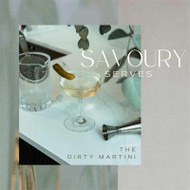How to make a Dirty Martini
Posted by Spirits Kiosk on 6 Feb 2023
As we celebrate all things savoury this month – what better way to start than with the iconic Dirty Martini!?
We’re hooked on Dirty Martinis right now and we’ve been splashing olive brine into coupe glasses with almost reckless abandon. All of it is enticing – from the chill-frosted glass inviting you to take a slurp to the deliciously filthy versions with that salty viscous mouthfeel.
It’s so simple an idea and yet, by adding in a splash of olive juice into a Martini recipe it seems to round out the flavours in such a spectacular way. Tangy, salty, briny and complex.
Here’s how you can make one yourself.
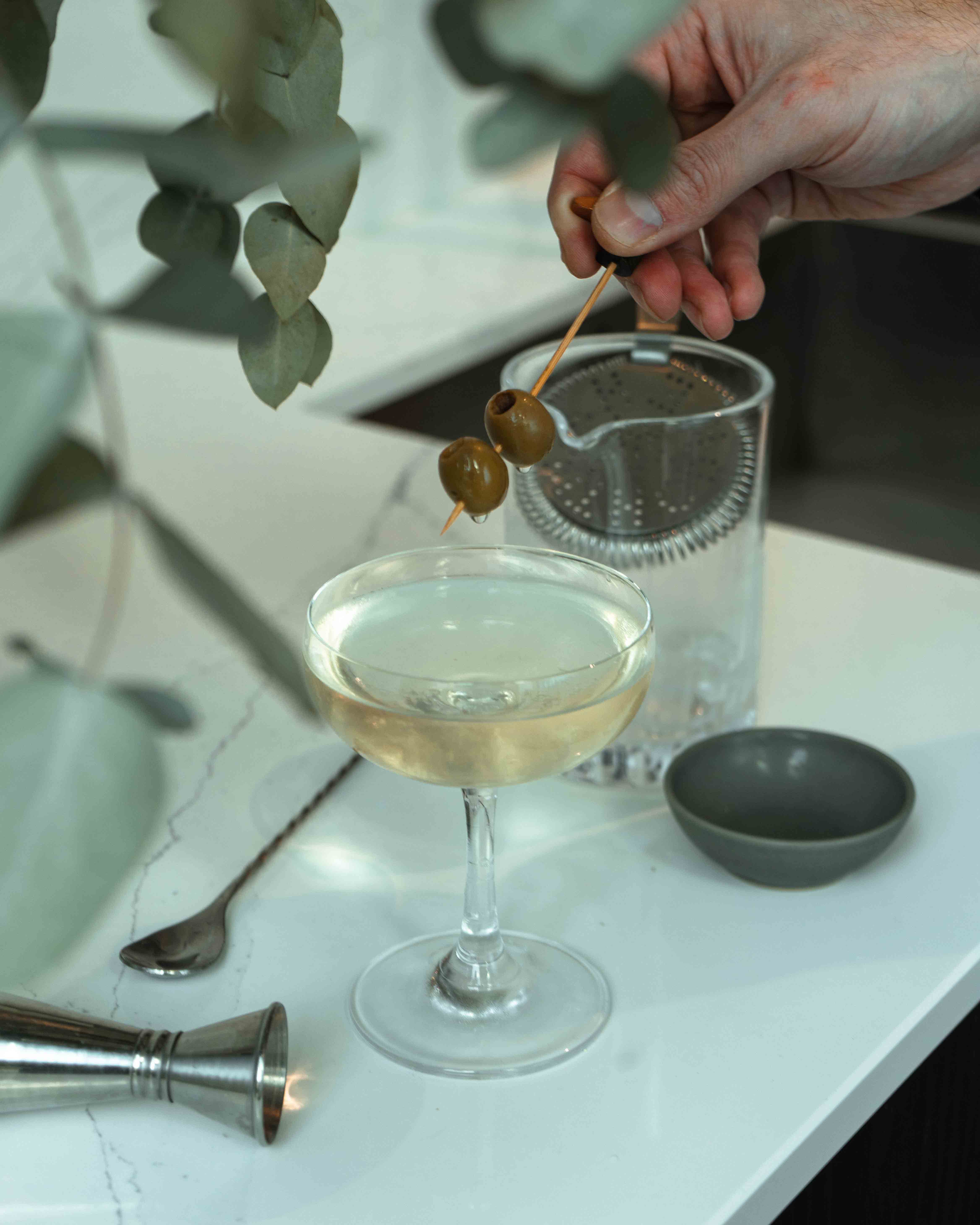
A Dirty Martini is made of gin, dry vermouth and olive brine. By definition, the Dirty Martini ought to have a more pronounced savoury quality to it, but opting for restraint over excess goes a long way when making one.
You want salt, you don’t want sea water. You want brine, you don’t want to be dredging through a broth each sip.
Dirty Martini
50 ml Dry Gin
20ml Dry Vermouth
15ml Olive brine
Combine all ingredients in a mixing glass with ice. Stir until chilled and diluted, and strain into a chilled coupe. Garnish with two pickled olives skewered on a cocktail stick.
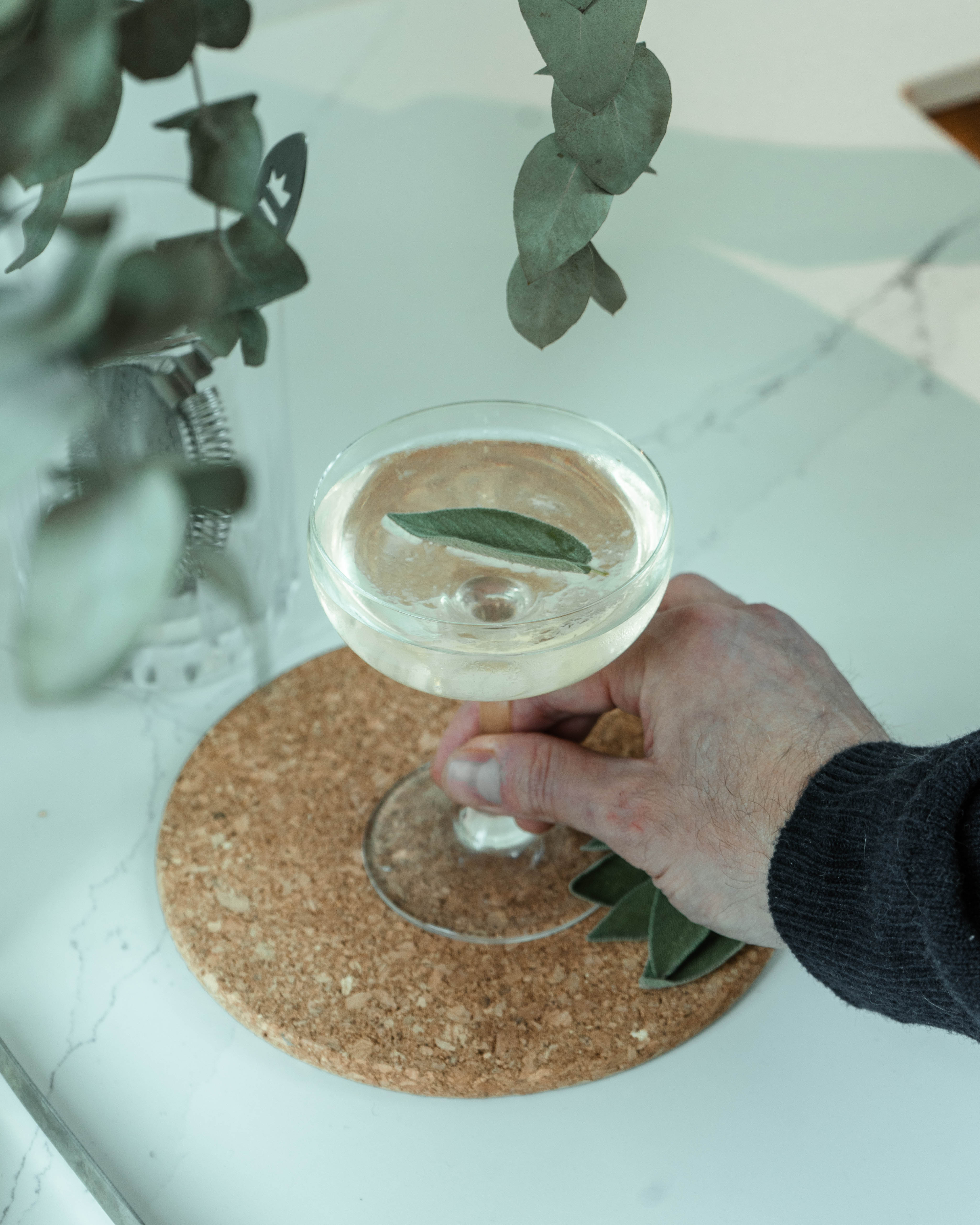
Alternative Garnishes
Herbs are always a good option when looking to make any drink a touch more savoury.
Olives are undoubtably the expected choice for a garnish in a Dirty Martini, but there’s something about sage that has us returning over and again. It’s unlike any other herb. There are woody hints of pine, a touch of mint and sometimes even eucalyptus as well as an earthy backdrop to the aroma.
It’s a heady mix that creates a herbaceous bridge to the gin and olive brine and one to try for those looking to take the savoury element of their Dirty Martini to the next level.
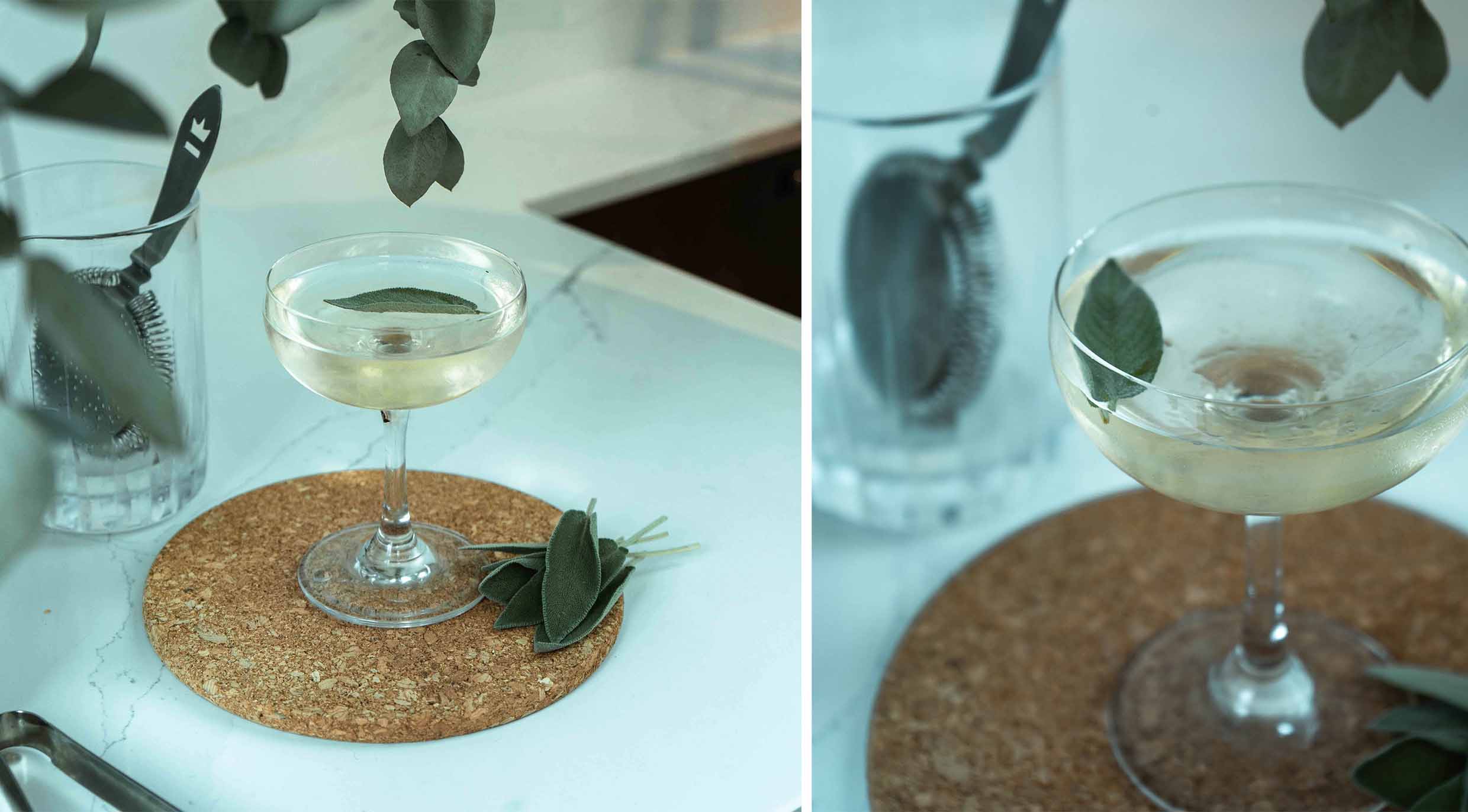
What makes a Dirty Martini “dirty”?
The term 'dirty' means that olive brine, usually from a jar of cocktail olives, has been added to the drink. Dirty is considered equal parts Dry Vermouth and brine, but you can make it 'extra dirty' or 'filthy' if you prefer by adding in more brine.
We like to make our own brined olives and given we love tinkering around in our home, how we do this varies as much as what's being pickled.
We respect that a Dirty Martini in a bar is with olive juice, but if at home, don't be shy to have some fun. Why not try pickle juice brine? Why not use lactic acid instead of salt. Experiment!
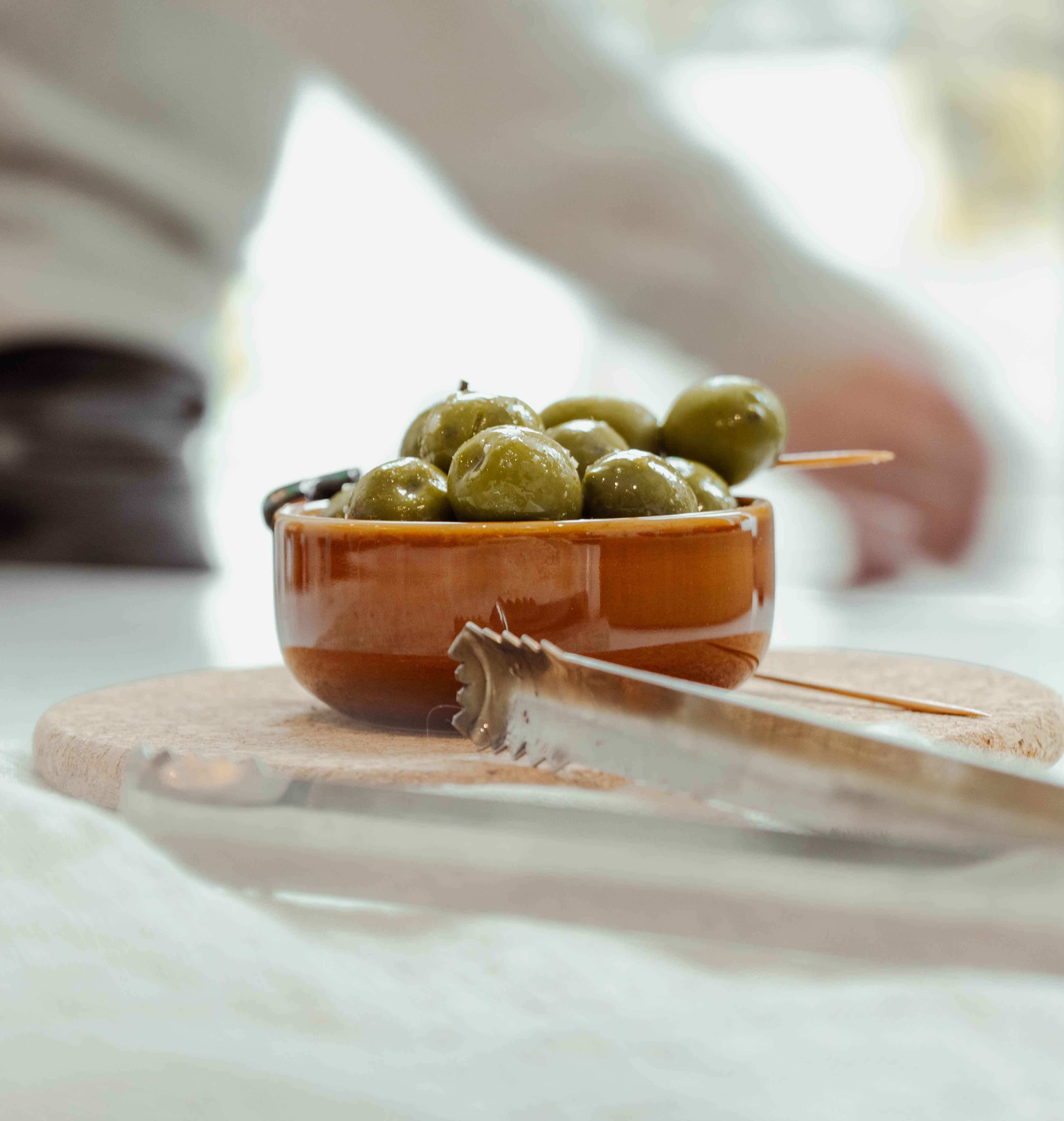
Where did such Savoury Martini madness come from?
Savoury Martinis are not new. By the 1930’s brine is even named as an ingredient in the famed My New Cocktail Book by G.H. Steele. Some say it was invented before that and the origins were at the Waldorf Astoria, who served Martinis with muddled olives. As is always the case for cocktail lore – it’s a blurry mix of stories and good times.
The Dirty Martini’s rise in popularity over the past three years is less to do with a return to favour of savoury profiles and, in our opinion, in large part due to the attention spent on the brine.
It makes sense too; it was the final piece of the puzzle for the cocktail to make a comeback. In a world where us nerds have literally obsessed over every facet of the Martini (the gin, vermouth, garnish, glassware, dilution), it lacked the same attention to detail. If you get the brine right, be it store bought or homemade – the Dirty Martini is hard to deny.
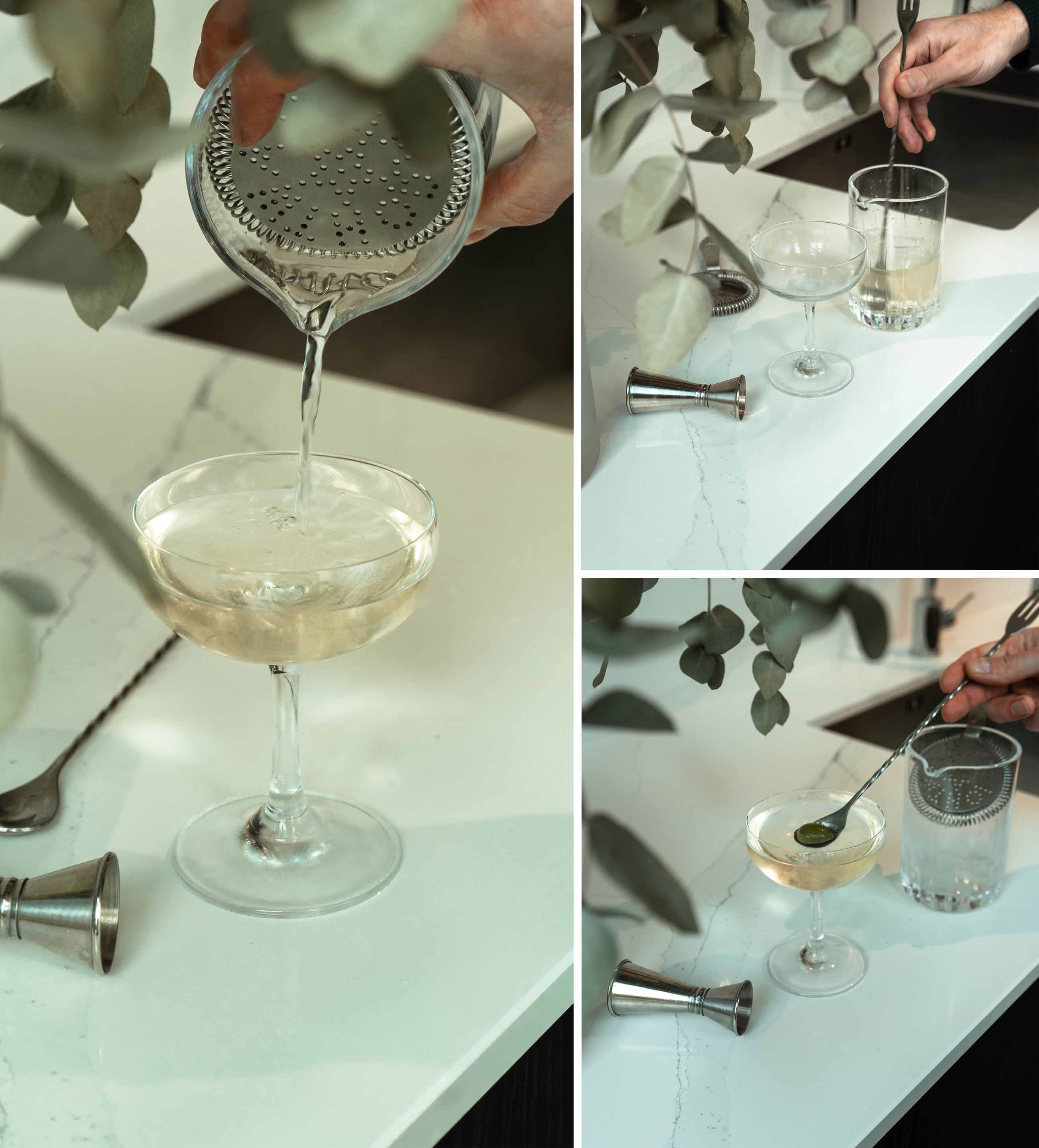
Gin or Vodka…?
Usually you look to create a balanced cocktail, but at least some of the point of a Dirty Martini is to tilt the classic formula out of balance. We find that easier to do in a controlled way using gin, as vodka isn’t so much tilted but totally thrown off kilter when you start adding in big flavours.
It's true, we will always say that juniper forward spirits offer the best opportunity for all cocktail to shine, but in this case the salt and brine compliment the aromatic botanicals in gin as well as the herbal bitterness of dry vermouth.
Here are some suggestions for which ingredients to arm yourself with…
Never Never Triple Juniper Gin - The name sets the tone for what to expect here - a metric tonne of juniper. Cubed. The spiced botanical they add in to the mix, pepperberry, is the real secret though as it extends the piney note onto the finish and turns this gin into a far more complex proposition. It also allows just the right gravitas on which brine, olives and vermouth can dance.
Citadelle Dry Gin - Made by a legendary pioneering master distiller, Citadelle is a fantastic gin filled with piney juniper and waxed, caramelised orange. Citadelle was the very first craft gin in this new generation and set a standard that few have surpassed the in 25 years since. It's the kind of bottle that you go back to as you can trust it works well. If you are looking for twists on the Dirty Martini and want to use pickle brine instead of olive brine - theirs makes for the perfect base.
Sipsmith VSOP Gin - Possibly the greatest Martini Gin. Imagine the botanicals as components in an orchestra, here the lead instrument, juniper, has amplified its presence in the ensemble, then raised in decibels by increasing the proof alcohol. The result is a Sipsmith symphony in ‘J’ major. Big juniper upfront with rich spice, followed by a long and dry finish that centres around juniper once more. Vermouth loves it and whether you make it dry or filthy - you'll be savouring each drop.
No.3 Gin - The gin is crisp, clean and has a grapefruit zing and a forest-like juniper tone. It’s bright upfront but rooty on the finish making it a good choice for a Bone Dry Martini. As for the Dirty part... We like this gin for the cocktail as the zesty grapefruit it carries is enough already, meaning that it still feels lively despite being weighed down in brine and savouriness.
Which Dry Vermouth?
Regal Rogue Daring Dry Vermouth - This vermouth is led by savoury and light salty notes that create an umami profile. It does so by marrying a grassy Sauvignon Blanc from South Australia with quandong and native thyme for a light aroma. This is followed by white pepper, gentian and native anise myrtle to taste. It's really herbaceous in character and its inherent saltiness marries well used in a Dirty Martini.
Noilly Prat Original - This is one of the most revered Vermouths for good reason and a must have for any Martini maker. Noilly Prat Original is delicious paired with seafood and the same is true when you add a touch of salty brine into your drink. On the nose there is slightly oaked mistelles with herbal aromas, balanced with floral notes and hints of chamomile. To taste the dry white wine emerges, with a complex yet delicate bitter finish laced with a touch of spice. The perfect partner for gin and a willing participant when it comes to making it dirty...



